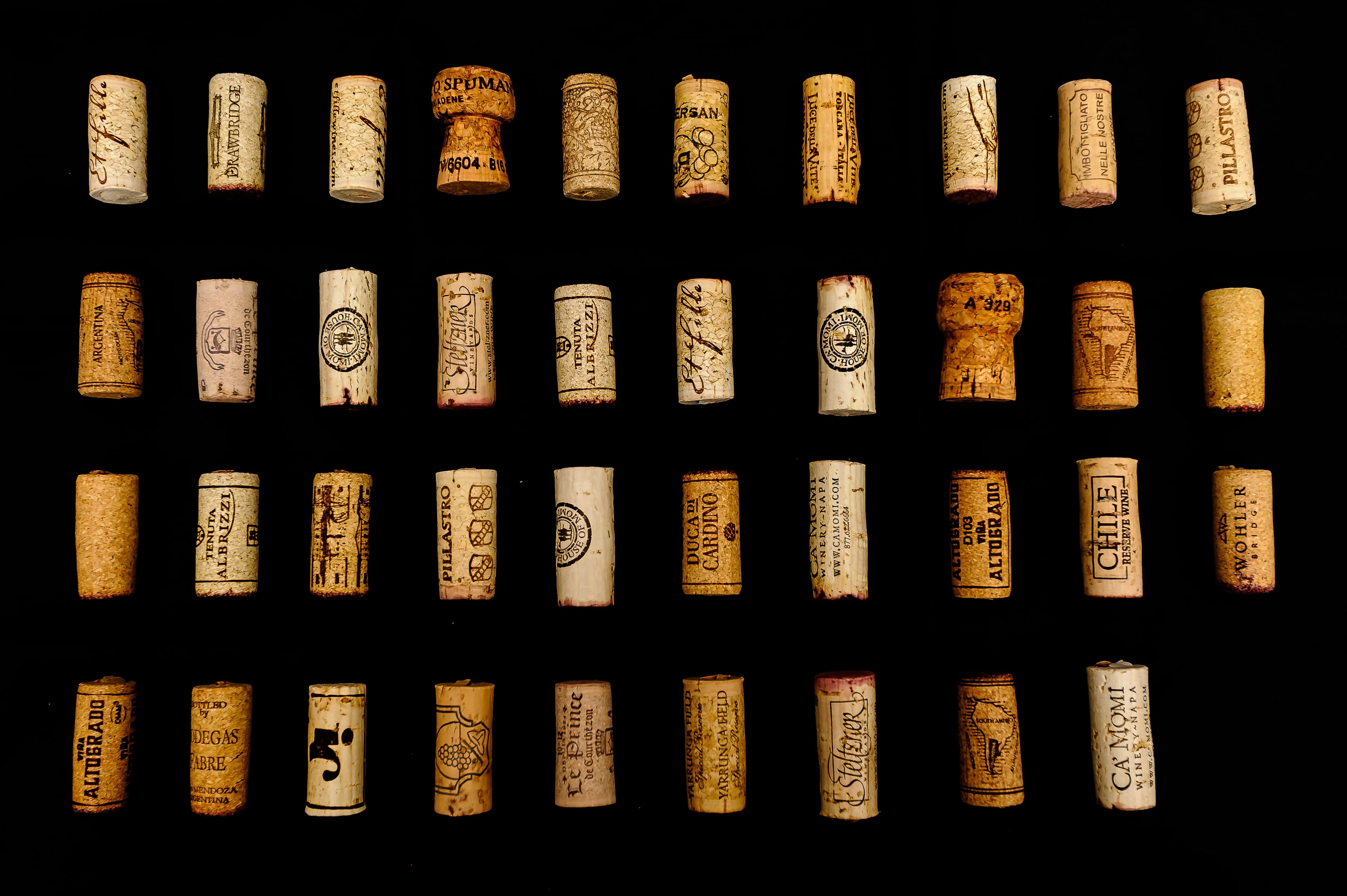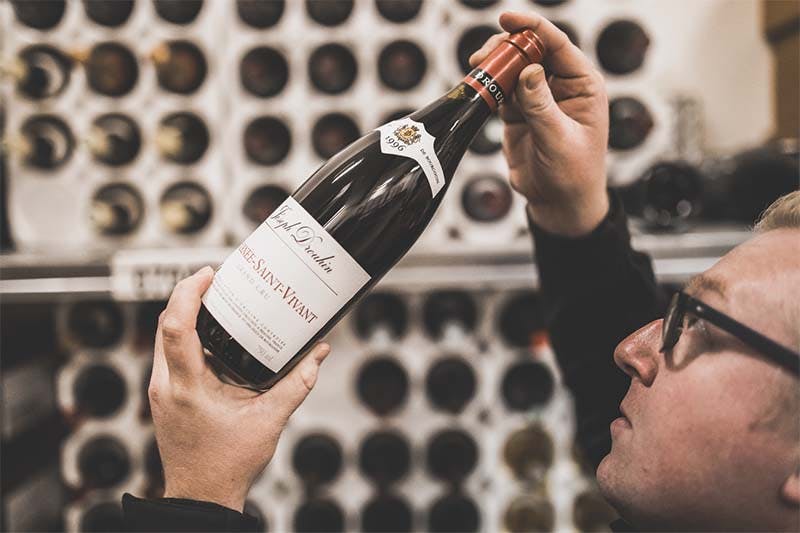
Tasting a Bordeaux wine is an art that improves with time. Discovering the subtleties of these great wines allows you to refine your senses and fully appreciate their richness.
The Steps of Tasting
The tasting of a Bordeaux wine unfolds in three distinct steps, each engaging a different sense: sight, smell, and taste.
Visual Examination
The visual examination is the first crucial step in tasting. Tilt your glass slightly against a white background to observe the wine's color. Bordeaux red wines typically present a range of colors from deep ruby to garnet, with purple hues for younger wines. The intensity and shade of the color can provide clues about the wine’s age and concentration.
Also, observe the brightness and clarity. A cloudy wine may indicate a fault, while a bright and clear wine generally signifies quality. Don't forget to examine the "tears" or "legs" that form on the glass walls when you swirl it. They can provide information about the alcohol content and concentration of the wine.
Olfactory Analysis
The olfactory analysis is often considered the most revealing step. Start by smelling the wine without swirling the glass to capture the most volatile aromas. Then, gently swirl the wine in the glass to release all its fragrances.
Bordeaux wines are renowned for their aromatic complexity. You may detect notes of red and black fruits (blackcurrant, blackberry, cherry), woody aromas (cedar, vanilla), spicy notes (pepper, licorice), and sometimes even floral (violet) or vegetal (green bell pepper for young Cabernet Sauvignons) nuances.
Taste Tasting
The taste tasting allows you to fully appreciate the wine. Take a small sip and let it circulate in your mouth. Observe the attack (first impression), the mid-palate, and the finish.
Great Bordeaux wines are characterized by their balance between fruit, acidity, and tannins. A good tannic structure is often present, especially in younger wines, which will soften over time. The length of the finish, or the persistence of flavors after swallowing or spitting out the wine, is an important indicator of quality.
Typical Aromas of Bordeaux Wines
Bordeaux wines are known for their rich and complex aromatic palette, which evolves over time.
Primary Aromas
Primary aromas come directly from the grape. In Bordeaux wines, you can find:
For reds: blackcurrant, blackberry, cherry, raspberry
For dry whites: lemon, grapefruit, green apple
For sweet whites: apricot, peach, mango
Secondary Aromas
Secondary aromas develop during fermentation and aging. They include:
Woody notes: vanilla, toast, smoke (from aging in oak barrels)
Lactic aromas: butter, cream (from malolactic fermentation)
Soft spices: cinnamon, clove
Tertiary Aromas
Tertiary aromas appear with bottle aging. They can include:
Animal notes: leather, musk
Forest floor aromas: mushroom, truffle
Cooked or candied fruits
Tobacco, cedar
A great Bordeaux like Château Margaux or Château Lafite Rothschild can develop extraordinary aromatic complexity over decades, harmoniously blending these different types of aromas.
The Age of Bordeaux Wines
The age of a Bordeaux wine is a crucial factor in its appreciation. Generally, a Bordeaux wine is considered "old" from 15 to 20 years. However, this notion varies depending on the quality of the vintage and the estate. Classified growths can reach their peak after 30, 40, or even 50 years.
The aging potential of a Bordeaux depends on several factors: the vintage, the producer, and storage conditions. On average, a classified growth can be stored for 20 to 50 years, or even longer for exceptional vintages. Some Bordeaux wines have shown remarkable longevity. For example, in 2015, a bottle of Château Lafite 1865 was opened and tasted, revealing complex aromas of truffle and forest floor despite its 150 years.
Very old wines can reach astronomical prices. In 2018, a bottle of Château Lafite 1869 was sold at auction for $230,000, setting a record for a 750ml bottle. These examples illustrate the exceptional aging potential of great Bordeaux wines and their value, both in taste and financially.
How to Appreciate a Great Bordeaux
To get the most out of a great Bordeaux, a few simple rules apply.
Ideal Serving Temperature
The serving temperature is crucial for revealing all the nuances of a great wine. For Bordeaux reds, aim for between 16°C and 18°C (61°F to 64°F). A wine served too cold will have muted aromas, while a wine served too warm will seem unbalanced and alcoholic.
Choosing the Right Glass
The choice of glass is also important. Opt for a stemmed glass with a wide enough bowl to allow the wine to breathe and develop its aromas. INAO glasses are perfect for Bordeaux wines.
Aeration and Decantation
Aeration is particularly important for great Bordeaux wines, which are often tannic in their youth. For a young wine (under 10 years), simple aeration in the glass may suffice. For older or particularly concentrated wines, decantation is recommended.
Decantation involves gently pouring the wine into a carafe. This not only aerates the wine but also separates the clear wine from any sediments that naturally form with age. A great wine like Château Haut-Brion or Château Mouton Rothschild may require several hours of decantation to fully express itself.
Appreciating a great Bordeaux requires attention and sensitivity. Each bottle offers an invitation to explore one of the most prestigious terroirs in the wine world while revealing its richness and complexity.
Share this article











